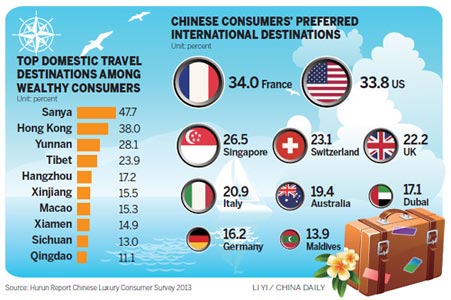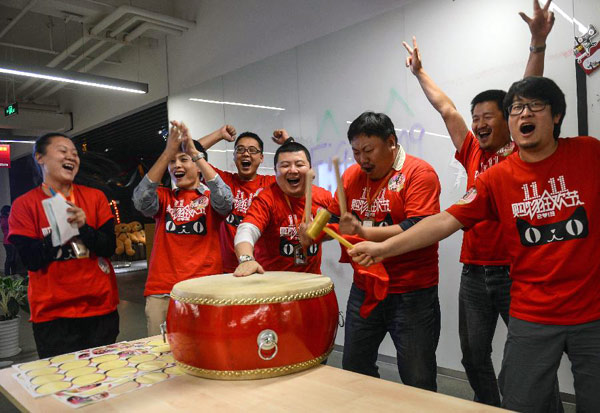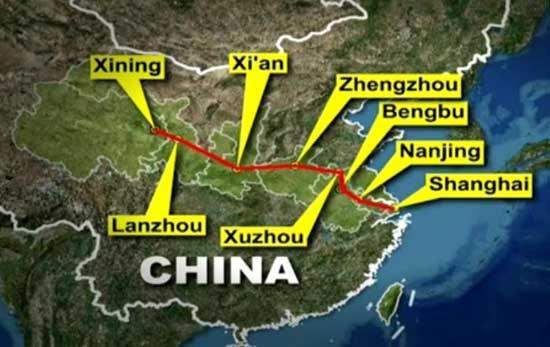As millions of Chinese prepare to return to their hometowns for Spring Festival, the challenges of containing the latest H7N9 bird flu epidemic have come sharply into focus.
Health authorities are deeply concerned by the resurgent epidemic, with about twenty new cases reported in the first two weeks of 2014, mostly in eastern costal regions. About 150 cases of H7N9 bird flu have been confirmed in China since the first case in March last year.
The virus is more active in winter and spring, and high density transportation in coaches, trains and aircraft could create "favorable circumstances" for the epidemic to spread, according to Li Lanjuan of the Chinese Academy of Engineering.
Li is China's leading researcher on bird flu and a member of the H7N9 prevention and control group. She warns that the virus might be spread by migrants returning to their, mainly rural, homes from developed eastern regions.
TRAVEL RUSH
During the world' s biggest annual human migration in the 40 days around Spring Festival, about 3.62 billion trips will be made this year, according to Tuesday's National Development and Reform Commission press release.
This year, the highlight of Spring Festival, Chinese Lunar New Year, falls on Jan. 31. It is the most important Chinese occasion for family reunions.
"We are worried about the risk brought by massive numbers of people gathering together in confined spaces," said Dr. Liang Weifeng of the medical college at Zhejiang University.
In Zhejiang, new H7N9 cases have been reported for six consecutive days. As of Tuesday, the eastern province had reported a total of eleven, including some fatalities. Zhejiang was also the site of China's first confirmed human-to-human transmission last November, when a man was infected while caring for his father-in-law.
More alarming still, Guizhou Province in the remote southwest of the country confirmed its first H7N9 fatality on Saturday; that of a migrant worker who returned from Zhejiang on Jan.4.
NEW H7N9 SCIENTIFIC RESULTS
Results of research by a Chinese team published in the Lancet, have established that variation of an amino acid on the H7 gene has made the H7N9 strain more infectious to mammals.
"On the PB2 gene, we have found another variation in a key amino acid. One more variation of a specified amino acid, and human-to-human transmission will become much more likely," said Liang, indicating his extremely high concern over the possibility.
The team recently identified a new partial variation in the virus, demonstrating its capacity to adapt to its environment.
"It has increased the risk of human-to-human transmission and brought more difficulty in treatment," Liang added.
Besides the travel rush, another problem facing health authorities is that Spring Festival is also the peak season for poultry sales and consumption.
The Chinese have a long tradition of eating fresh ingredients especially at important feasts and family reunions. Chinese people, especially those in eastern regions, like to buy live chicken and duck and slaughter them at home for freshness and a festival atmosphere. Despite a government ban, live poultry markets are reemerging in some regions.
At an open-air market in Zhejiang, Cai, a local senior, and his wife selected several live birds for the city's speciality, Hangzhou Roast Duck. "Dishes of chicken and duck are a must on New Year's Eve. We can hardly change tradition," said Cai.
"There is no problem after cooking, and the duck and chicken sold here have been quarantined," said Zhu Linying, a housewife at Xianlinyuan market in Hangzhou.
Zhejiang and other provinces are cranking up H7N9 control with more inspections and tougher quarantine measures wherever live birds are sold.
Poultry are easily infected by H7N9, and the risk cannot be contained simply by closing live poultry markets, said Li Lanjuan.
"Some deaths were caused by delays in seeking medical advice, as the virus quickly attacks the lungs," said Li, alerting people to mind their health during the holiday and go to hospital if they have fever or a cough.
Source: Xinhua


